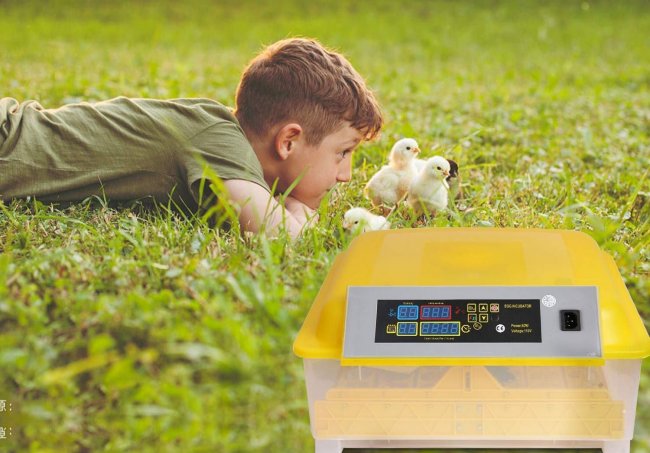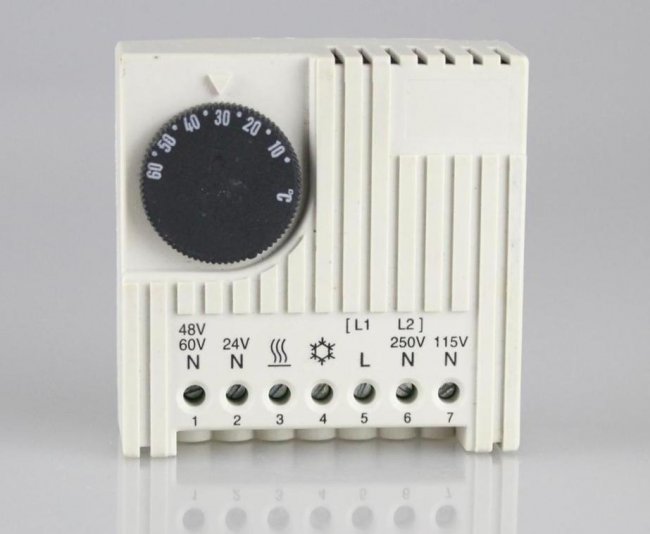How an automatic regulator works and works on the example of an incubator chamber
The simplest and most common form of automatic control of the operation of technical devices is automatic control, which is called a method of keeping a given parameter constant (for example, shaft rotation speed, medium temperature, steam pressure) or a method of ensuring of its change according to a certain law. It can be carried out through appropriate human actions or automatically, that is, with the help of appropriate technical devices — automatic regulators.
Regulators that maintain a constant value of the parameter are called their own, and controllers that provide a change of a parameter according to a certain law are called software.
In 1765, the Russian mechanic I. I. Polzunov invented an automatic regulator for industrial purposes, which maintained an approximately constant water level in steam boilers. In 1784, the English mechanic J. Watt invented an automatic governor that maintained a constant speed of rotation of the shaft of a steam engine.
Regulation process
Consider how you can maintain a constant temperature in a chamber called thermostat, an example of which would be an incubator chamber.
Incubator
Thermostats are widely used in various industrial sectors, especially in the food industry. Finally, the living space can also be considered a thermostat in winter if it maintains a constant temperature with the help of special valves offered on the heating radiators. Let's show how non-automatic room temperature control is performed.
Assume that it is desirable to maintain a temperature of 20 ° C. It is monitored by a room thermometer. If it rises higher, then the radiator valve is slightly closed. This slows down the flow of hot water in the latter. Its temperature decreases and therefore the flow of energy into the room decreases, where the air temperature also becomes lower.
When the air temperature in the room is less than 20 ° C, the valve opens and thus the flow of hot water in the radiator increases, due to which the temperature in the room rises.
With such regulation, small fluctuations in the air temperature around the set value are observed (in the example considered, about 20 ° C).
Mechanical thermostat
This example shows that certain actions need to be performed in the regulation process:
- measure the adjustable parameter;
- compare its value with the preset value (in this case, the so-called control error is determined - the difference between the actual value and the preset value);
- to affect the process according to the value and sign of the control error.
In non-automatic regulation, these actions are performed by a human operator.
Automatic adjustment
Regulation can be done without human intervention, that is, by technical means. In this case, we are talking about automatic regulation, which is carried out using an automatic regulator. Let's find out what parts it consists of and how these parts interact with each other.
The measurement of the actual value of the controlled parameter is carried out by a measuring device called a sensor (in the incubator example — temperature sensor).
The results of the measurements are given by the sensor in the form of some physical signal (height of the thermometric liquid column, deformation of the bimetallic plate, value of voltage or current at the output of the sensor, etc.).
The comparison of the actual value of the controlled parameter with the given one is made by a special comparator called the null body. In this case, the difference between the actual value of the controlled parameter and its specified (ie required) value is determined. This difference is called control error. It can be both positive and negative.
The value of the control error is converted into a certain physical signal that affects the executive that controls the state of the controlled object. As a result of the impact of the executive body on the object, the controlled parameter increases or decreases depending on the sign of the adjustment error.
Thus, the main parts of the automatic regulator are: a measuring element (sensor), a reference element (zero element) and an executive element.
In order for the zero element to compare the measured value of the controlled variable with the set value, it is necessary to enter the set value of the parameter in the automatic controller. This is done with the help of a special device, the so-called Master, which converts the automatic adjustment of the set value of the parameter into a physical signal at a specified level.
In this case, it is important that the physical signals of the sensor outputs and the set value are of the same nature. Only in this case is it possible to compare with a null body.
It should also be noted that the power of the output signal corresponding to the regulation error is, as a rule, insufficient to control the operation of the executive body. In this regard, the specified signal is pre-amplified. Therefore, the automatic regulator, in addition to the three main parts indicated (sensor, zero element and actuator), also includes a setting and an amplifier.
A typical block diagram of an automatic control system
As can be seen from this diagram, the automatic control system is closed. From the control object, information about the value of the controlled parameter goes to the sensor, and then to the zero body, after which the signal corresponding to the control error passes through the amplifier to the executive body, which has the necessary effect on the control object.
The movement of signals from the control object to the null body is a feedback loop. Feedback is a prerequisite for the regulation process. Such a closed loop is also affected by external influences.
First (and this is the most important), the object of regulation is exposed to external influences.It is these influences that cause changes in the parameters of its state and impose regulation.
Secondly, the external influence on the circuit of the automatic control system is the input into the zero body through the set value of the required value of the controlled parameter, which is determined based on the analysis of the operating mode of the entire system, which includes this automatic device. This analysis is performed by a human or a control computer.
Examples of automatic regulators:
The device and principle of operation of the electric thermostat for iron
The use of a PID controller in automation systems on the example of the TRM148 OWEN



